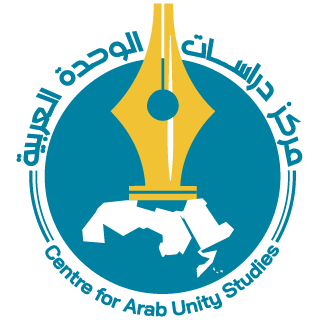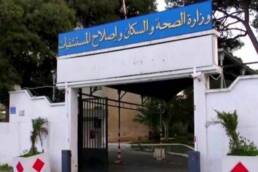المصادر:
(*) نُشرت هذه الدراسة في مجلة المستقبل العربي العدد 467 في كانون الثاني/يناير 2018.
(**) بن أحمد حوكا: باحث في علم الاجتماع السياسي، جامعة محمد الخامس، الرباط.
(***) حسن دنان: باحث في القانون العام والعلوم السياسية، جامعة محمد الخامس، الرباط.
(****) محمد النضر: باحث في القانون العام والعلوم السياسية، جامعة القاضي عياض، مراكش.
[1] John Waterbury, The Commander of the Faithful: The Moroccan Political Elite (A Study in Segmented Politics) (New York: Columbia University Press, 1970), pp. 94‑110.
[2] Cinquante ans de développement humain, perspectives 2025: Document de synthèse du rapport général (Rabat: Le Maroc possible, 2006), p. 62.
[3] أحمد أغبال، الإسلام والسياسة وقضايا الإصلاح في المجتمع المغربي: نتائج استطلاع الرأي حول الإصلاح بالمغرب (الرباط: مركز الدراسات والأبحاث في العلوم الاجتماعية، 2009).
[4] David Montgomery Hart, Behind the Courtyard Door, the Daily Life of Tribes Women in Northern Morocco (Ipswich, MA: Ipswich Press, 1994).
[5] Karen Bodnaruk Jazayeri «Identity-Based Political Inequality and Protest: The Dynamic Relationship between Political Power and Protest in the Middle East and North Africa,» Conflict Management and Peace Science, vol. 33, no. 4 (2016), pp. 400‑422.
[6] Katie E. Corcoran, David Pettinicchio and Jacob T. N. Young, «Perceptions of Structural Injustice and Efficacy: Participation in Low/Moderate/High-Cost Forms of Collective Action,» Sociological Inquiry, vol. 85, no. 3 (2015), pp. 429‑461.
[7] Ben Ahmed Hougua, «Les Dimensions verticales et horizontales de l’individualisme et du collectivisme dans le contexte culturel marocain,» Les Cahiers psychologie politique [En ligne], no. 27 (juillet 2015), <http://lodel.irevues.inist.fr/cahierspsychologiepolitique/index.php?id=3065>.
[8] بن أحمد حوكا وعثمان الزياني، «الأخلاق العائلية ومستقبل الديمقراطية في المجتمعات العربية: دراسة في الانعكاسات السياسية لمتلازمة ثقافية» (دراسة قيد النشر).
[9] David Montgomery Hart, The Aith Wariaghar of the Moroccan Rif: An Ethnography and History, Tucson Publication for the Wenner-Gren Foundation for Anthropological Research (Tucson, AZ: Arizona University Press, 1976).
[10] Raymond Jamous, Honneur et Baraka, les structures sociales traditionnelles dans le Rif (Cambridge, MA: Cambridge University Press; Paris: Maison des Sciences de l’Homme, 1981).
[11] Rapport de l’enquête nationale sur le lien social au Maroc (Rabat: Institut royal des études stratégiques, 2012).
[12] إدموند بورك، الاحتجاج والمقاومة في مغرب ما قبل الاستعمار (1860 – 1912)، ترجمة محمد أعفيف (الرباط: منشورات كلية الآداب والعلوم الإنسانية، 2013)، ص 34.
[13] Roger Joseph and Terri Brint Joseph, The Rose and the Thorn: Semiotic Structures in Morocco (Tucson, AZ, University of Arizona Press, 1987).
[14] Yuriy Gorodnichenko and Gerard Roland, «Culture, Institutions and Democratization,» (Mimeo UC Berkeley, 2013).
[15] David A. McMurray, In and Out of Morocco: Smuggling and Migration in a Frontier boomtown (Minneapolis, MN: University of Minnesota Press, 2001), pp. 64‑65
[16] Raymond Boudon, Effets pervers et ordre social, 3ème éd. (Paris: Quadrige, 2009).
[17] Ronald Inglehart, La Transition culturelle dans les sociétés industrielles avancées (Paris: Economica, 1993).
[18] Richard G. Braungard, «Historical Generations and Generation Units: A Global Pattern of Youth Movements,» Journal of Political and Military Sociology, vol. 12, no. 1 (1984), pp. 113- 135.
Richard G. Braungard, «Historical and Generational Patterns of Youth Movements: A Global Perspective,» Comparative Social Research, vol. 7 (1984), pp. 3- 62.
[19] Nancy Langton, «Niche Theory and Social Movements: A Population Ecology Approach,» The Sociological Quarterly, vol. 28, no. 1 (1987), pp. 51‑70.
[20] Shingo Hamanaka, «Demographic Change and its Social and Political Implications in the Middle East,» Asian Journal of Comparative Politics (May 2016), pp. 1–17 (DOI: 10.1177/2057891116636490).
[21] Jack A. Goldstone, «Demography and Social Movements,» in: Donatella Della Porta and Mario Diani, eds., The Oxford Handbook of Social Movements (Oxford: Oxford University Press, 2015), pp. 146‑158.
[22] Sigmund Freud, Psychologie collective et analyse du moi (Paris: Edit Payot et Rivages, 2012).
[23] Ángela Suárez Collado, «Territorial Stress in Morocco: From Democratic to Autonomist Demands in Popular Protests in the Rif,» Mediterranean Politics, vol. 20, no. 2 (2015), pp. 217‑234.
[24] Maurice Halbwachs, Les Cadres sociaux de la mémoire (Paris: Albin Michel, 1994).
[25] Lawrence Rosen, Two Arabs, a Berber and a Jew: Entangled Lives in Morocco (Chicago, IL: University of Chicago Press, 2015).
[26] Paul Ricoeur, La Mémoire, l’histoire, l’oubli (Paris: Le Seuil, 2000), pp. 30‑52.
[27] Henri Bergson, Matière et mémoire: Essai sur la relation du corps à l’esprit (Paris: Presses universitaires de France, 1963), pp. 225‑235.
[28] Ricoeur, La Mémoire, l’histoire, l’oubli, pp. 67‑111.
[29] Abderrahim El Maslouhi, «L’IER: Espace public et apprentissage de la justice procédurale au Maroc:. Une lecture habermassienne,» L’Année du Maghreb, vol. 3 (2007), pp. 163‑192.
[30] Badiha Nahhas, «Un musée pour gouverner la marginalité: Les Conflits de patrimonialisation dans le rif,» dans: Béatrice Hibou et Irene Bono, eds., Le Gouvernement du social au Maroc (Paris: Karthala, 2016), pp. 233‑274.
[31] Valensi Lucette, «Le Roi chronophage: La Construction d’une conscience historique dans le Maroc postcolonial,» Cahiers d’études africaines, vol. 30, no. 119 (1990), pp. 279‑298.
[32] Dorly Claire, «La Dérangeante diversité des registres de l’ombre,» Cahiers jungiens de psychanalyse, vol. 3, no. 123 (2007), pp. 7‑16.
[33] Alain Fine, «Fixation au trauma; résurgence, élaboration,» Conférence Vulpian (mai 2002). <http://www.spp.asso.fr/wp/?p=5917>.
[34](*) لا شيء يضيع ولا شيء يُخلَق، كلُّ شيء يتحوَّل.
(**) لا شيء يولد ولا شيء يفنى ولكنَّ الأشياء الموجودة سلفاً تتركَّب مع بعضها ثم تنفصل عن بعضها من جديد.
Sigmund Freud, «Remémoration, répétition et perlaboration,» 1914, pp. 185‑196, Œuvres complètes, Psychanalyse, XII, 1913 -1914 (Paris: Presses universitaires de France, 2005), (II (3)).
[35] Sigmund Freud, «Deuil et mélancolie, Extrait de Métapsychologie,» Sociétés, no. 86 (2004), p. 10.
تمت ترجمة هذا المقطع (بتصرف).
[36] المصدر نفسه، ص 12.
[37] Olivier Boitard, «Le Militantisme: Attitudes névrotiques ou sublimation?,» Psychiatrie française, vol. 25, no. 4 (1994), pp. 17‑24.
[38] Judith Butler, The Psychic Life of Power (Stanford, CA: Stanford University Press, 1997).
[39] جيمس سكوت، المقاومة بالحيلة: كيف يهمس المحكوم من وراء ظهر الحاكم، ترجمة إبراهيم العريس ومخايل خوري (بيروت: دار الساقي، 1995).
[40] Phebe Cramer, The Development of Defense Mechanisms: Theory, Research and Assessment (New York: Springer-Verlag, 1991), p. 54.
[41] Pierre Bourdieu et Jean-Claude Passeron, La Reproduction: Éléments pour une théorie du système d’enseignement (Paris: Minuit, 1971), livre I.
[42] Collado, «Territorial Stress in Morocco: From Democratic to Autonomist Demands in Popular Protests in the Rif».
[43] Amar Almasude, «Protest Music and Poetry in the Rif,» Race, Gender and Class, vol. 8, no. 3 (2001).
[44] حول مفهوم الإكراه المزدوج، انظر في هذا الشأن: David Lipset, Gregory Bateson: The Legacy of a Scientist (Boston, MA: Beacon Press, 1980).
بدعمكم نستمر
إدعم مركز دراسات الوحدة العربية
ينتظر المركز من أصدقائه وقرائه ومحبِّيه في هذه المرحلة الوقوف إلى جانبه من خلال طلب منشوراته وتسديد ثمنها بالعملة الصعبة نقداً، أو حتى تقديم بعض التبرعات النقدية لتعزيز قدرته على الصمود والاستمرار في مسيرته العلمية والبحثية المستقلة والموضوعية والملتزمة بقضايا الأرض والإنسان في مختلف أرجاء الوطن العربي.









